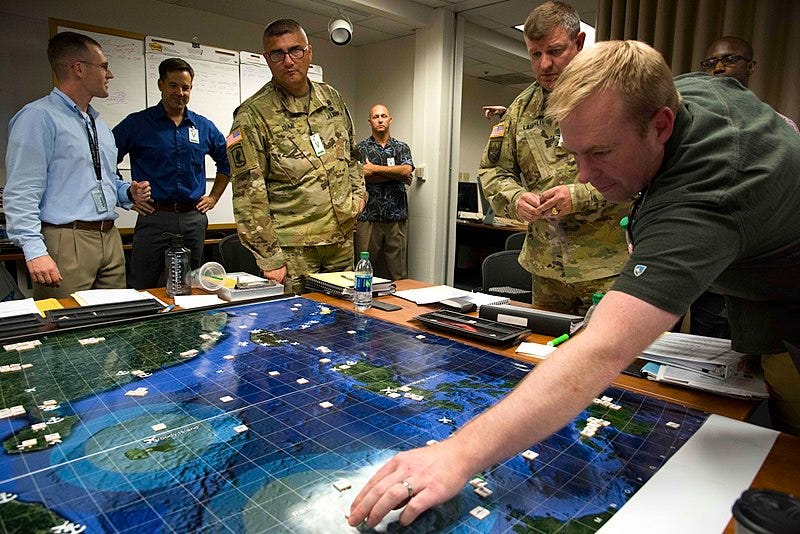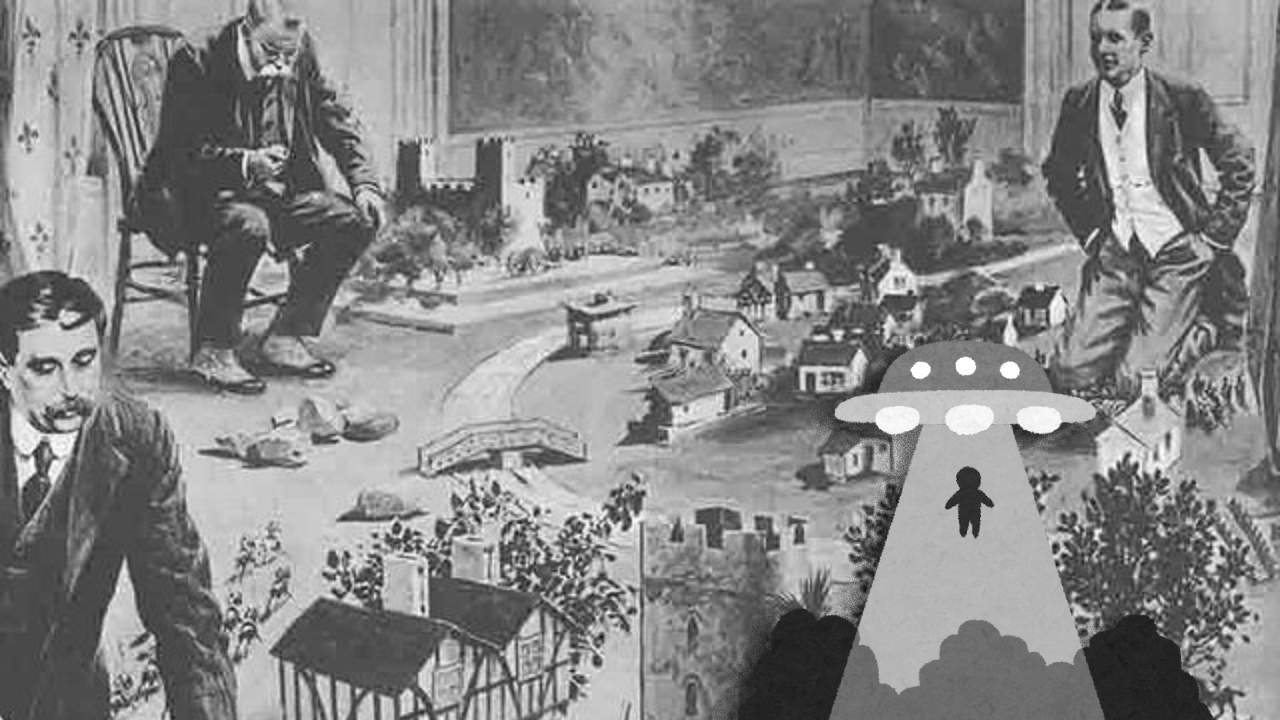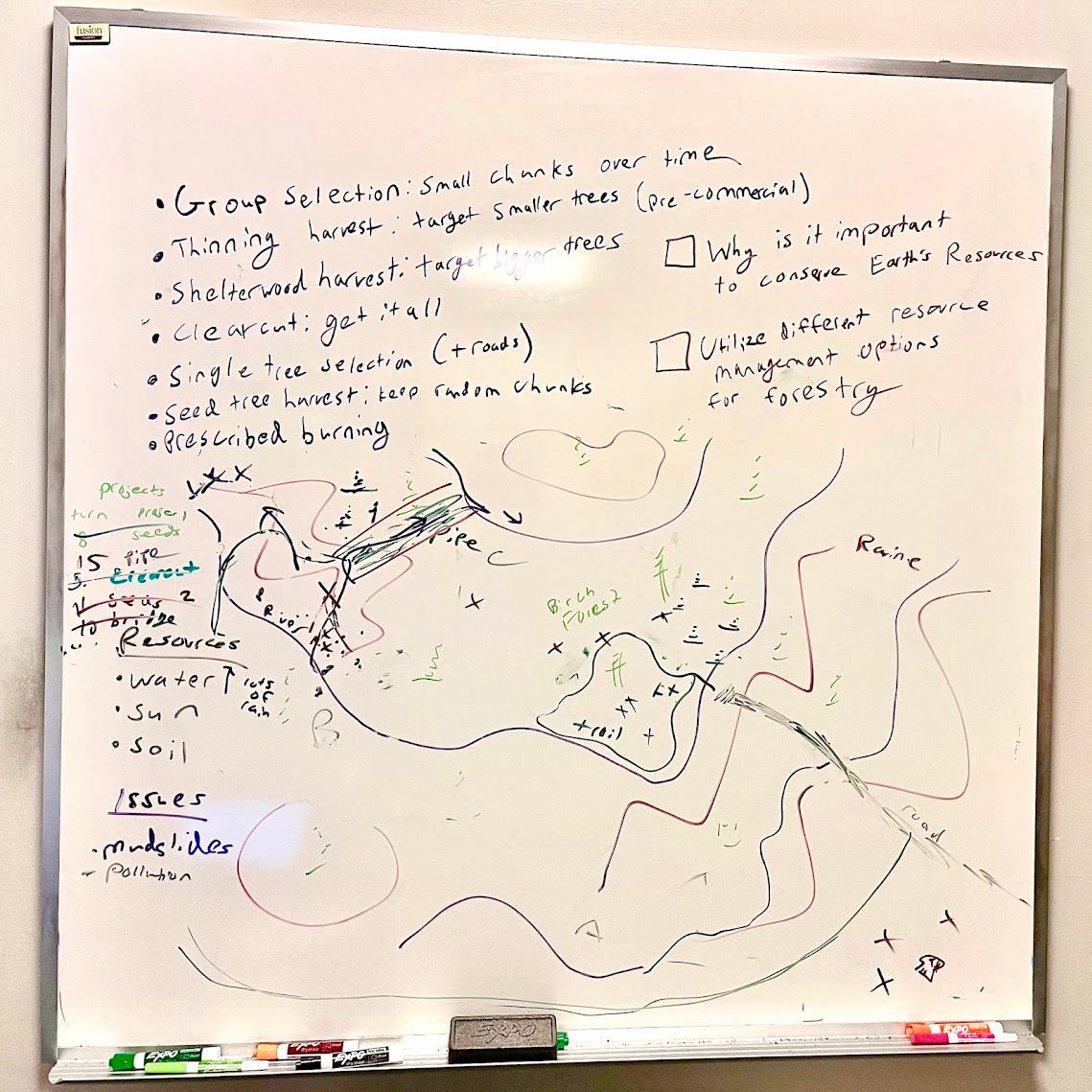Matrix Games: War and Losing the Forest for the Trees
A War Game's Influence with American Conflict, ChatGPT, and Forestry Education.
Recently, I was struck by a compelling video from People Make Games titled "The Games Behind Your Government's Next War." This in-depth near-documentary reveals how war games, and the broader tabletop genre, are being carefully observed by the military-industrial complex, with significant real-world implications. The video explores the extensive funding poured into the genre, the attention military personnel give to influential tabletop figures, and the tangible impact of war games on conflicts such as Ukraine and Palestine. I will be diving in further into the subgenre of matrix games mentioned in the video.
A matrix game is a unique type of role-playing game that emphasizes structured argumentation and decision-making within a controlled scenario. Typically, the game involves two players and a Game Master (GM). One player makes a decision or proposes an action, while the other player counters with reasons why that decision may not work. The GM, who is usually an expert in the field, listens to both arguments and then makes a final call on the outcome, which leads to a plus (+) or a minus (-) on a dice roll to add an element of chance. On a grander scale, the results of these decisions and dice rolls are recorded, forming a complex matrix or data table that helps organizations, such as military or government agencies, simulate and analyze potential outcomes of real-world scenarios (assuming the knowledge base behind the players and expert accurately regard the modern real-world). This method of gameplay allows for dynamic exploration of strategies, with each decision feeding into a larger framework that can influence policy or operational decisions in the real world. These possibly lethal designs are strongly influenced by the everchanging and nuanced field we have some measure of input in today.
“There is something at work beyond the evil of Smaug. Something far more powerful. We could remain blind to it but it will not be ignoring us, that I can promise you. A sickness lies over the Greenwood...” - Gandalf, ‘The Hobbit: An Unexpected Journey’, 2012
As highlighted in The Three Witches of War Gaming, matrix-based games wield a complex and often elusive influence. Many scenarios remain shrouded in government confidentiality, colored by the biases and preconceptions of those who design them. These games frequently lack diverse perspectives and modern updates, and their mechanics can be altered through the hands of various players, right down to the random general making mechanical tweaks during playtesting. In other words, "a camel is a horse designed by committee."
“For example, Chinese players, and by implication Chinese decision makers, typically act in a more cooperative way than their American equivalents. This implies that simply handing players a brief may be insufficient to replicate accurately the mind-set of those they are playing. Player recruitment may change game outputs, and each game’s lessons may be different depending on player backgrounds, even using the same scenario and ground rules” - John Curry, The utility of narrative matrix games—A Baltic example.
Subjective ideas should not be so easily made into objective strategies without a lot of heavy moderation and diverse backgrounds involved. However, this doesn't negate the genre’s impact, nor does it mean matrix games go unused. These games shape our world just as we shape them. At the very least, we should stay aware of their potential and keep our eyes open.
“The players of a matrix game will drive or at least influence the outcomes of planned actions based on their ability to argue their rather than on any underlying quantitative or qualitative model … Sometimes a player’s expertise is acknowledged by other players and umpires and so their arguments carry more weight. ” - Peter Perla, Wargaming: From the Past to the Future
While I'm no expert in war gaming and am just beginning to delve into it myself, I aim today to explore matrix games as a tool, not a fully reliable solution, that could be applied in other contexts.
Artificial Intelligence

Researching this topic proved challenging, as searching for "Matrix" and "AI" often led to the more familiar cinematic references. However, matrix gaming, where a third-party expert facilitates decision-making between two players, raises an intriguing question: has there been any exploration of using systems like ChatGPT in this role? While it's an interesting idea, it is one that should be approached with caution. ChatGPT, as a language-learning model, relies on outdated information, language-based predictions, and has gaps in its own memory. Additionally, it utilizes a vast array of sources that may not always be reliable, combined with an inability to perform accurate mathematical reasoning. Given these limitations, ChatGPT is not suitable for the nuanced and informed judgments required in matrix gaming.
But how is it being used?
Studies have explored developing machine learning models that predict game outcomes based on past solutions, utilizing a matrix format. Wargaming communities have begun to experiment with AI, often in humanitarian-focused operations. For example, Rex Brynen's article, ChatGPT Plays a Matrix Game, illustrates how AI approaches these scenarios:
“The first few moves sound plausible at first glance, and certainly identify important considerations in the provision of humanitarian assistance. However, they are largely bereft of context and any understanding of the current or recent situation in Syria and how that affects humanitarian assistance efforts.”
This highlights the challenge of AI-driven decision-making in complex, dynamic environments. The idea of a large-scale game with human participants under an AI GM remains an intriguing thought experiment.
On this topic, I had a great conversation with Derek Ricke, who works at HPC Solutions and is a former U.S. Army captain of ten years. Derek commented on the above ChatGPT scenario, mentioning curiosities towards a hybrid approach. One could allow both AI and human players to submit their inputs in parallel, evaluate each other's work, and then let the human player have the final say. Derek also referenced how the U.S. government is currently exploring AI's potential in more routine applications:
“The US government as a whole is doing a fairly broad review and assessment of this very question for more routine uses like the the potential to review and approve government requests and other related actions -- not sure what has come of it. I've come across a few papers on AI ethics, mostly from business schools or otherwise, and mostly just addressing the question of usage of LLMs by students as a writing/study aid”

In fact the U.S. government now has a website dedicated to Administration Actions on AI, including fellowship programs “designed to increase the number of U.S. citizens trained in disciplines of science and engineering important to defense goals.”
During our conversation, we also explored science fiction, discussing Philip K. Dick's Defenders and David VanDyke's Galactic Liberation series, both of which delve into theoretical implications of AI. This largely reminded me of another Philip K. Dick story, Mold of Yancy, which I teach in my media literacy and science fiction class. if you don’t mind spoilers, the story presents a society where propaganda is subtly delivered through an artificial persona that addresses every controversial topic, yet never forms a real opinion. The result is a population easily swayed, lacking independent thought - a cautionary tale that resonates when considering the risks of integrating biased, subjective AI into an easily biased and subjective war game.
As in most fields, everyone wants to propose how a modern tool could be used, but it’s actually application remains constantly shrouded. While I haven’t found concrete evidence of ChatGPT consistently being used in matrix games out in the wild, I wouldn’t be surprised if, somewhere in a government building, it's quietly being tested. And I suspect that sooner or later, we’ll hear about lives being impacted by its semi-informed guesswork.

The Quiet Year and Forestry
A few months ago, I was teaching environmental science one-on-one to a student who was part of a D&D club. To blend his interests with the lesson, we used The Quiet Year, a tabletop map-making game that guides players in gradually building a town and crafting a narrative through prompts. We added a twist by focusing on a logging scenario, set in a canyon, where forest management had to balance community resource needs with ecological preservation.
The Quiet Year is a prime example of modern tabletop games - no dice rolls, no cards, just prompts and guidelines to shape a story. While some critique such games as being too freeform, prioritizing imagination over structured gameplay, they offer unique storytelling experiences.
Matrix games, on the other hand, turn subjective ideas into objective scenarios. What is included on the model will influence the data that is produced. As John Curry noted in The Utility of Narrative Matrix Games—A Baltic Example,
"Adding refugee counters gives the game a more humanitarian focus, whereas introducing large numbers of military units tends to encourage players to focus on the kinetic aspects of confrontation."
So, what if we combined these two approaches? Imagine in our logging scenario, students' choices carry more weight, requiring explanations and analysis of potential weak points. The teacher, serving as the subject matter expert, could evaluate the move, roll dice for a touch of chance, and apply modifiers to determine the outcome. This blend would provide concrete feedback mechanisms within abstract storytelling, enhancing both learning and gameplay.
For more info regarding breaking apart matrix mechanics and common variations, visit http://www.mapsymbs.com/wdmatrix.html.

Evaluation Tools
When evaluating systems like matrix games, it's crucial to consider a broad range of metrics that capture both the effectiveness and user experience of the game. For example, in the context of serious games - an alternative term for war games beyond military applications - using a structured technique such as the Fuzzy Analytic Hierarchy Process (FAHP) allows for a more nuanced evaluation. FAHP breaks down complex decisions into hierarchies, enabling forms of comparison and prioritization of alternatives. Incorporating fuzzy logic (not having exact numbers or facts) adds another layer of sophistication, reflecting the inherent vagueness and uncertainty of real-world situations.
A proposal for a new evaluation tool for serious games emphasizes four key dimensions: pedagogical, technological, ludic (or game-related), and behavioral. These dimensions identify metrics that balance both result-oriented goals and the ease of play and engagement. Metrics within the pedagogical dimension, for instance, focus on targeted skills, learning outcomes, and error management, ensuring the game's educational value is upheld. The technological, ludic, and behavioral dimensions, on the other hand, assess factors such as game design, performance, usability, motivation, and user experience, ensuring the game remains engaging and accessible - which could theoretically help against some of the three witches changing mechanics.
By incorporating these dimensions into the evaluation, we can create a grading system for matrix games - including those in the classroom. Fuzzy numbers can be applied to the outcomes of specific gameplay moves, with weights assigned based on the educators judgment of how realistic or effective the moves feel. This approach ensures that both the strategic and experiential aspects of the game are thoroughly evaluated, leading to a more robust and meaningful assessment. As matrix games are utilized in important campaigns, other grading systems should be explored to help measure the success of these ventures.
Other Applications
With the help of my friend Connor Wiklund, I discovered a few intriguing applications of matrix systems in research, though these examples are by no means exhaustive:
A study titled "Multi-Objective Linguistic-Neutrosophic Matrix Game and Its Applications to Tourism Management," which explores how matrix games can be applied in the tourism sector.
An analysis of matrix games used to practice containing influenza outbreaks, which touches lightly on gender equity approaches. Participants felt the game's rapid pace accurately reflected real-world dynamics based on their input, though some found it too fast-moving. Read more here.
A university-level program that simulates the future of a university. While it was an insightful exercise, the creator acknowledged underestimating the time needed for each turn, leading to compressed negotiations. Participants also critiqued the abstraction of finances and could have done with more set point values. Learn more about it here.
In Summary
These war games are closely monitored by the military-industrial complex, influencing real-world conflicts like Ukraine and Palestine. It’s important to keep an eye on how a genre of play is used in warfare.
While AI like ChatGPT has potential, it struggles with complex decision-making, requiring human oversight. I severely doubt it should be used in military operations, though I fear it might be.
Merging the storytelling elements of The Quiet Year with the structured decision-making of matrix games can enhance both learning and gameplay, complementing abstract ideas with concrete outcomes.
Introducing tools like the Fuzzy Analytic Hierarchy Process (FAHP) can improve the assessment of matrix games by balancing pedagogical goals and user experience.
War game mechanics may be applied outside of war, but game mechanics not previously designed for war may find their way back into the trenches.
If you enjoyed this deep dive into the intersection of tabletop design and real-world impact, consider subscribing for more content such as this. You can additionally explore my other newsletter, where I spotlight new and often underreported scientific discoveries shaping our future.





